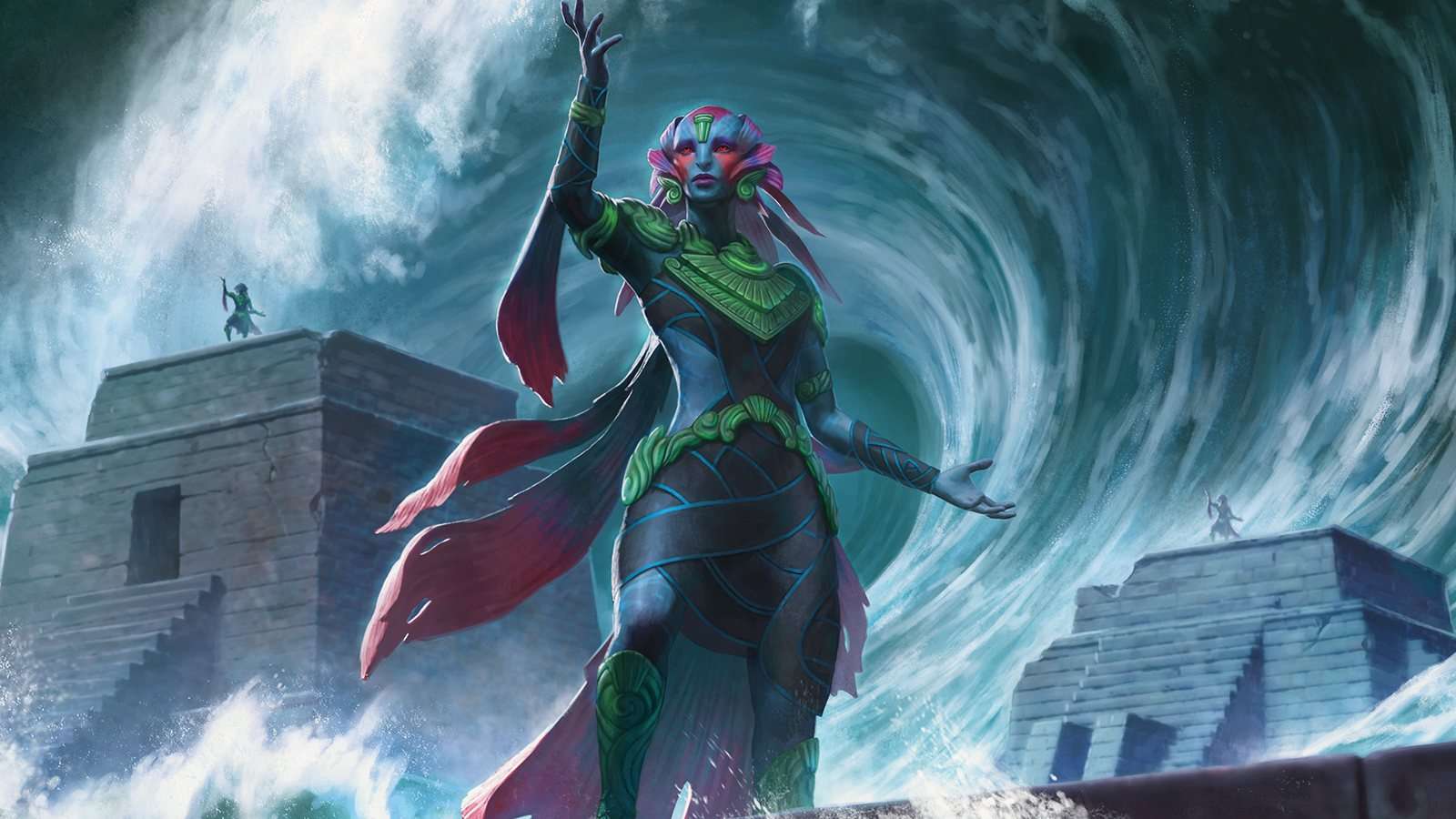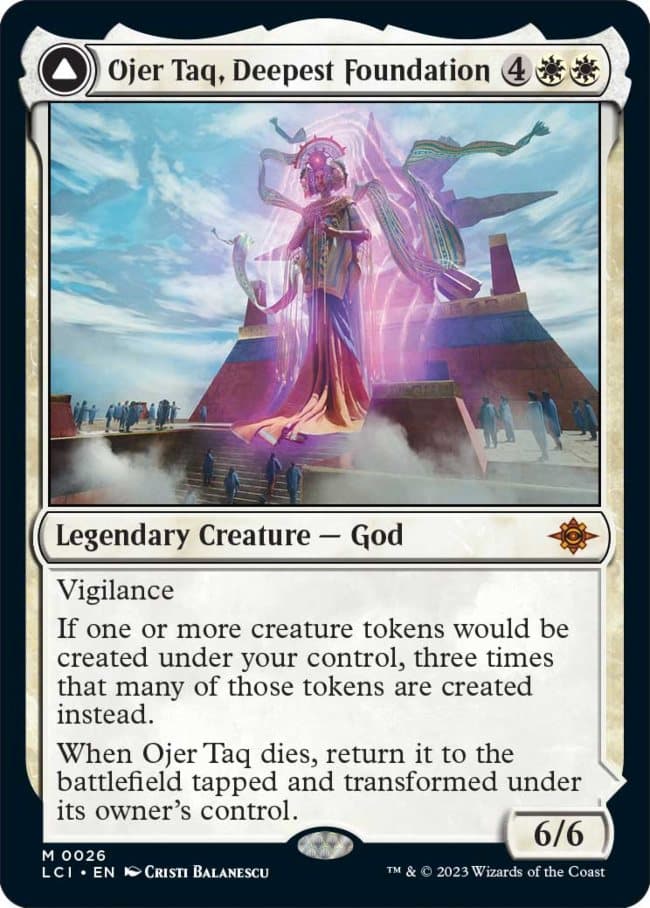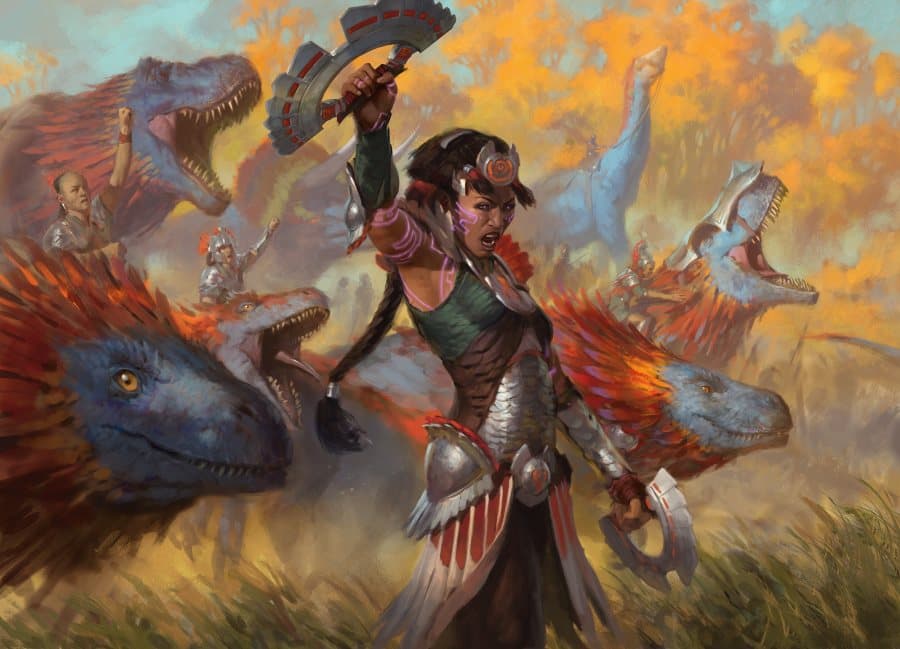The Lost Caverns of Ixalan is a huge step up for MTG’s worldbuilding
 WOTC
WOTCThe return to MTG’s Mesoamerican-inspired plane in The Lost Caverns of Ixalan sees its designers literally digging down into the world’s foundations, unearthing something exciting and new.
While many players come to Magic: The Gathering for the strength of its mechanical design and engaging gameplay, just as many are drawn in by its impeccable worldbuilding. With dozens of varied worlds that capture the imagination, MTG’s worldbuilding is second to none.
Now, in returning to the plane of Ixalan for the first time since its debut, MTG’s designers are doubling down on what makes the world stand apart while reinterrogating and rebuilding some of its foundations.
Ixalan: The old and the new
During a recent press briefing Q&A with Wizards of the Coast, it was revealed that The Lost Caverns was originally intended to take place on a brand-new plane, with the switch to Ixalan coming a few months into development. Working within the constraints of furthering an existing Plane’s story helped sharpen the team’s focus considerably.
In quite literally deepening the world, The Lost Caverns brings exciting new developments to Ixalan, while recontextualizing and building on what came before.
Designing the gods of Ixalan

Gods have long been a crucial part of MTG’s design and cosmology. While many planes across MTG’s vast multiverse see little to no divine influence, others like Theros and Amonkhet are deeply defined by the roles that the gods play.
Much like Theros and Amonkhet before it, The Lost Caverns of Ixalan will play host to a whole cycle of god cards. Gods were intrinsic to the story of Ixalan in Magic’s first return to the plane, but now Lost Caverns has them manifest as powerful, playable creatures.
Worldbuilding Designer Miguel Lopez and Senior Art Director Ovidio Cartagena confirmed a desire to represent the gods of Ixalan as ‘more than just big tall creatures.’ The gods of this plane and this set are more collections of iconography than recognizable humanoid deities. Their designs are vibrant and impactful, and their alt-art versions perfectly represent this, foregrounding the icons and patterns associated with the gods.
The gods’ mechanical designs reflect this individuality, foregoing the typical Indestructible effect for transformation and potential resurgence.
Groups – not individuals – shape the plane
 WOTC
WOTCFor much of its past decade of design, MTG has been defined by heroes. Whether inspired by the cinematic storytelling of Marvel or not, Planeswalkers have increasingly played superhero-esque roles in MTG’s worlds and stories. This was particularly prevalent in the long-term War of the Spark and Phyrexian War sagas, which saw the Gatewatch feature prominently as protagonists.
Now, in the era of the Omenpath, travel between planes is accessible by more than just Planeswalkers.
With the planes more open than ever, this is an era of Magic is less tied to the heroic and antagonistic figures of the past. As a result, The Lost Caverns of Ixalan finds itself free to focus more on the stories of groups and factions, less concerned with individual heroes and villains, and more with the push and pull of empires and faith, discovery and danger.
The Lost Caverns of Ixalan is shaping up to be another bold step forward into Magic’s Omenpath arc and is leading the way for future worldbuilding success.
If you click on a product link on this page we may earn a small affiliate commission.



